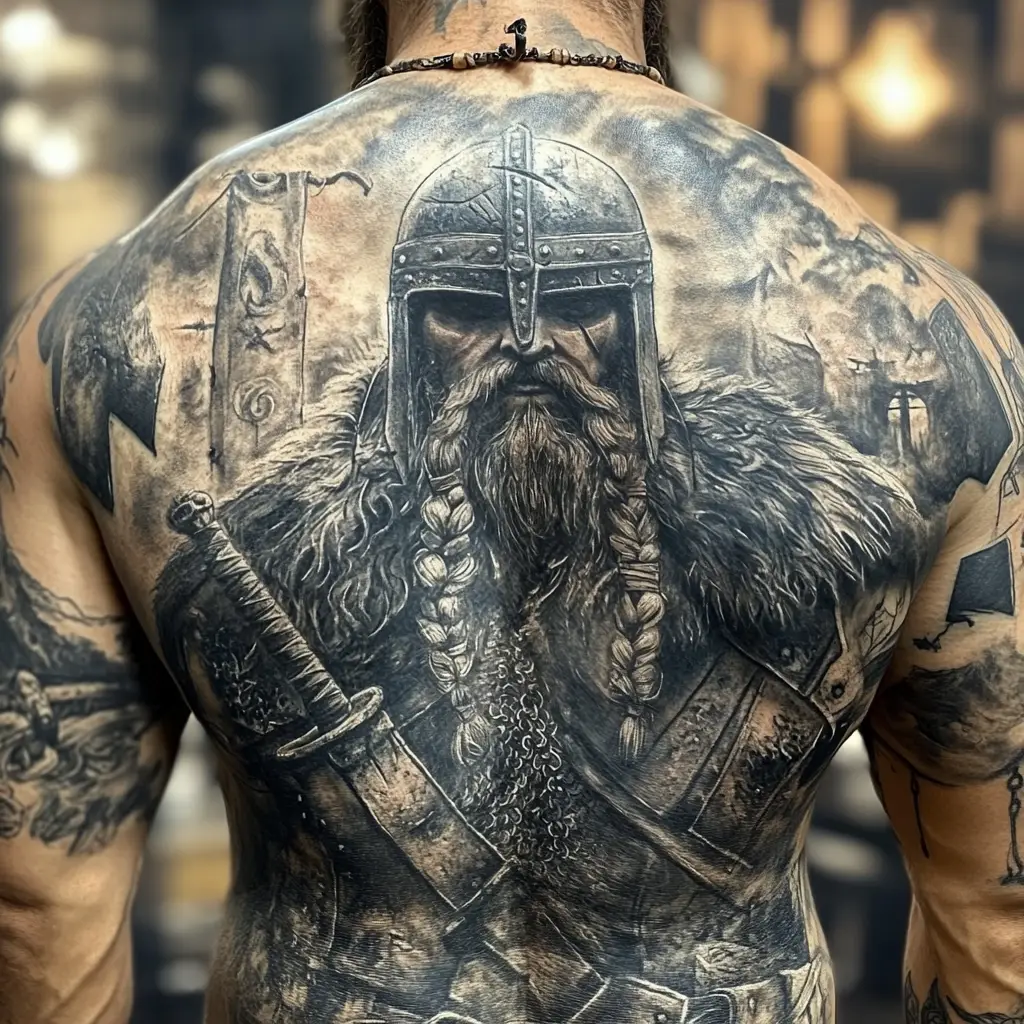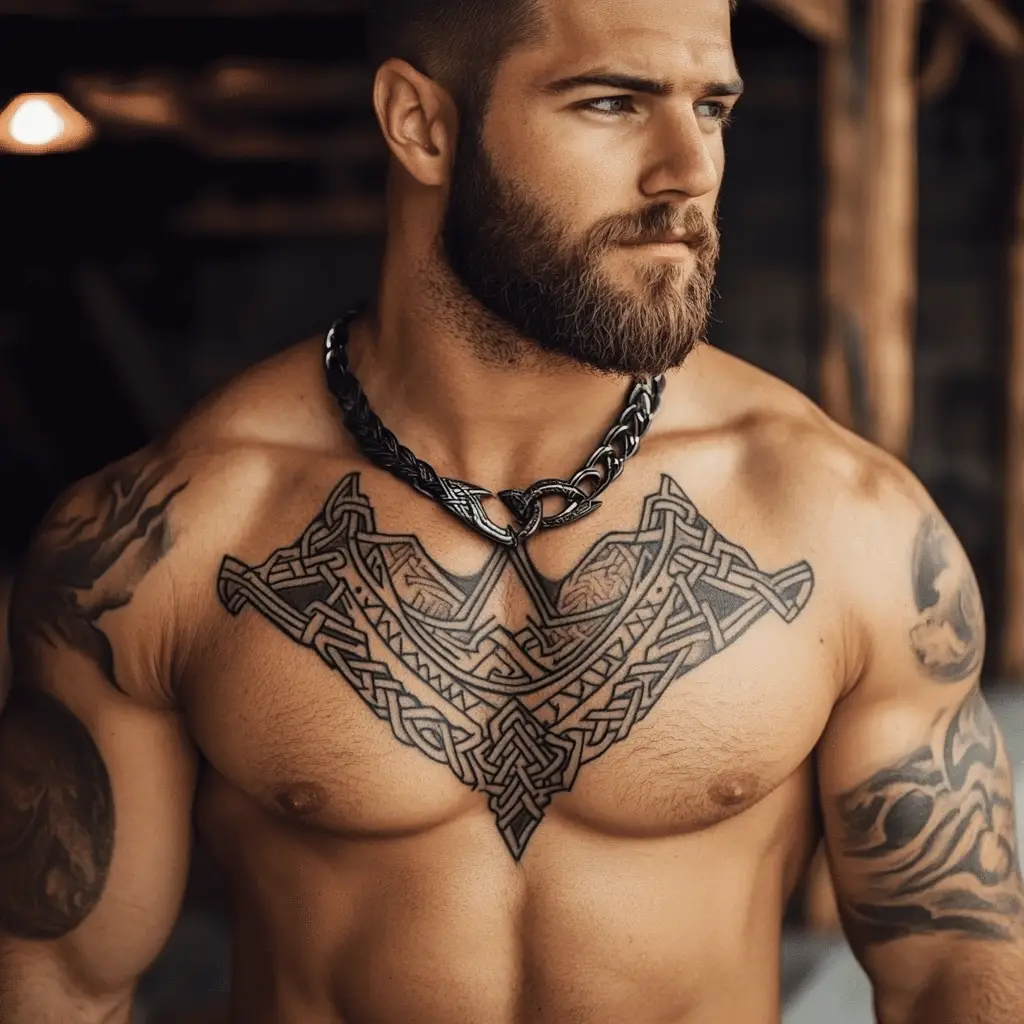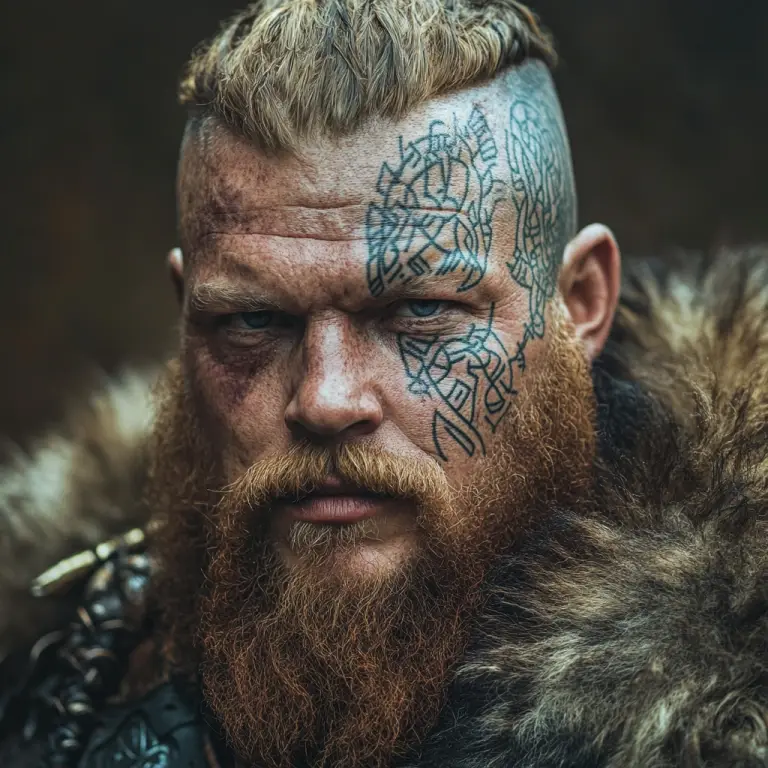Viking tattoos have gained significant popularity in modern culture, transcending the ancient historical roots of Norse society and becoming a symbol of strength, courage, rebellion, and even spiritual identity. Here’s a breakdown of their relevance and impact today:
Symbolism of Viking Tattoos
Viking tattoos often embody strong cultural, spiritual, and aesthetic meanings. Some common motifs and their modern interpretations include:
Viking Runes: Ancient Norse characters believed to hold mystical properties. Popular runes like Algiz (protection) or Ansuz (wisdom) have become symbols of guidance and personal empowerment.
Thor’s Hammer (Mjölnir): Representing strength, protection, and divine power, Thor’s hammer is one of the most iconic Viking symbols. Today, it’s often used by those seeking strength in the face of adversity.
Yggdrasil (Tree of Life): A symbol of connection between the realms (the human world, gods, and the underworld). Yggdrasil tattoos are often linked to growth, balance, and spirituality.
Viking Warriors & Helmets: Tattoos depicting Viking warriors with helmets, shields, or axes serve as representations of bravery and warrior spirit, appealing to those who identify with values like courage and tenacity.
Valkyries: Female figures who chose the bravest warriors for Valhalla. Valkyrie tattoos have gained popularity, often symbolizing empowerment and feminine strength in modern times.
Dragons and Serpents: Dragons in Viking lore were often associated with power, wisdom, and protection. These designs are still popular today, often used to evoke a sense of mystery and strength.
Popularity in Modern Culture
Media Influence:
The Viking TV series, especially “Vikings”, has contributed significantly to the resurgence of interest in Viking culture, including Viking tattoos. Characters like Ragnar Lothbrok, Floki, and Lagertha are often depicted with tattoos, further cementing the connection between Viking imagery and modern pop culture.
Contemporary Fashion & Identity:
In modern times, Viking tattoos are more than just historical references—they’re also a style statement. Many people choose Viking tattoos as a way to connect to their roots or express personal identity. These tattoos might symbolize the desire to embrace the independent, rebellious spirit of the Vikings or align with certain cultural values like honour, loyalty, or strength.
Spirituality and Norse Paganism:
With the rise of interest in Norse Paganism and modern Heathenry, many individuals choose Viking-inspired tattoos as a form of spiritual expression. Symbols like Thor’s Hammer or Wolf tattoos (representing Fenrir) can symbolize a deep connection to the gods or Norse mythology.
Viking Tattoos in Modern Life
Viking tattoos have become versatile in their meaning and appeal:
For Strength and Protection: Many people get Viking tattoos to symbolize personal strength, resilience, or protection. For example, Thor’s Hammer can be worn by someone seeking to channel their inner power.
Personal Connection to Norse Heritage: Those with Scandinavian roots often use Viking tattoos to honour their ancestry and the ancient traditions of their ancestors.
Symbol of Rebellion: The Vikings are often romanticized as rebels, people who defied norms and built their own destinies. Many individuals today, particularly in youth culture, use Viking tattoos to signal a rebellious spirit or a rejection of authority.
Cultural Appreciation: Many modern tattoo collectors are drawn to Viking designs simply because they appreciate the artistry of Viking symbols and the raw, bold aesthetic they offer.
Viking Tattoo Styles in Modern Culture
Traditional Viking Tattoos: Many modern Viking tattoos draw from the bold black and grey style, mimicking the tattooing techniques of historical Norsemen.
Minimalist Viking Tattoos: For those who prefer subtlety, minimalist designs like runes, small axes, or simple geometric versions of Yggdrasil are popular.
Watercolour Viking Tattoos: The more artistic side of Viking tattoos has led to the incorporation of watercolour techniques, where the natural world and spiritual symbols blend into vibrant, flowing designs.
Realistic Viking Portraits: Some choose realistic tattoos of Viking figures, from warriors with intricate armour to ancient gods, often using them as tributes to the strong figures from Viking lore.
Viking Tattoos and Cultural Appreciation vs. Appropriation
With their rise in popularity, it’s important to differentiate between cultural appreciation and cultural appropriation. While Viking tattoos are often celebrated by people with Scandinavian heritage, it’s essential that individuals from outside these communities approach these tattoos with respect and understanding of their origins, especially when the designs are deeply tied to spiritual beliefs or historical identity.
In Conclusion
Viking tattoos today reflect a blend of historical reverence, personal expression, and modern symbolism. Whether representing the bravery of the Norse warriors, the spiritual strength of the gods, or a connection to one’s roots, Viking tattoos continue to resonate with people from all walks of life, embodying values that remain relevant in the modern world.



